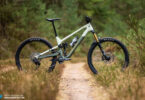Endura’s Chris Smith takes the rough with the smooth

Endura sports rider, Chris Smith, can ride just about anything, from urban DH races to freeriding in the mountains, he even holds the world record for the longest manual so he knows his way around a bike. Chris takes time out to talk to Tim John about what gets him going and how he picks himself up when he hits the ground hard.
“There have been two or three occasions when I’ve knocked on death’s door.”
Chris Smith, a man who admits an addiction to risk in the same tone that others might use to confess a weakness for crisps, cuts a relaxed figure, even though he is now more aware of the dangers of his trade than ever before.
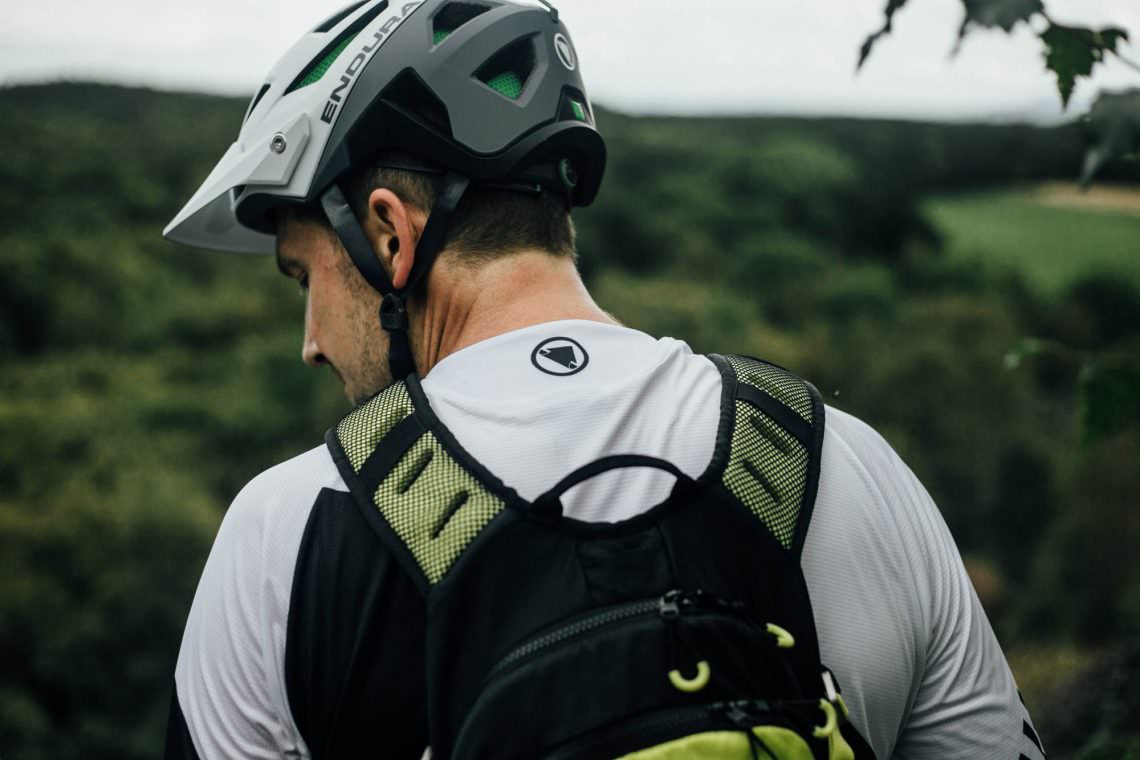
“It makes you stronger mentally,” he says of the moments in which he has confronted his own mortality. “You learn what the body can take – and what it can’t.”
Outwardly, little in Smith’s world has changed since he first became an Endura athlete eight years ago. When we speak, he has put the new MT500 collection through its paces in a morning scouting the Bings – a weird, semi-industrial landscape of giant slag heaps from the long dormant paraffin industry – for his Hidden Playgrounds series.
Hidden Playgrounds, while fronted by Smith, is in many ways a quintessentially Endura project: a series of films intended to inspire people to ride, shot in locations far from mountain biking’s hotspots. It’s difficult to imagine brands of similar scale remaining so connected to grassroots riding, but in his Scottish clothing supplier, Smith has found a supporter for his project of similarly maverick personality.
Endura’s Martin Steele, a Scotsman, mountain biker and cyclo-cross fanatic, has been ideally placed to help Smith scout locations on Endura’s home turf, including a series of WWII gun placements around the Firth of Forth, as well as today’s eerie, abandoned location; one that nature is fast reclaiming.
Last July, Steele accompanied Smith to shoot a short film at the Bings, and on today’s return visit, Smith drops in from its near-vertical walls of shale with confidence. From our vantage point, far below the towering mounds of shale, he is reduced to a tiny silhouette (“Action Man, the mountain bike edition”) but fear isn’t part of the equation, even though he is now more acutely aware of the risks than ever.
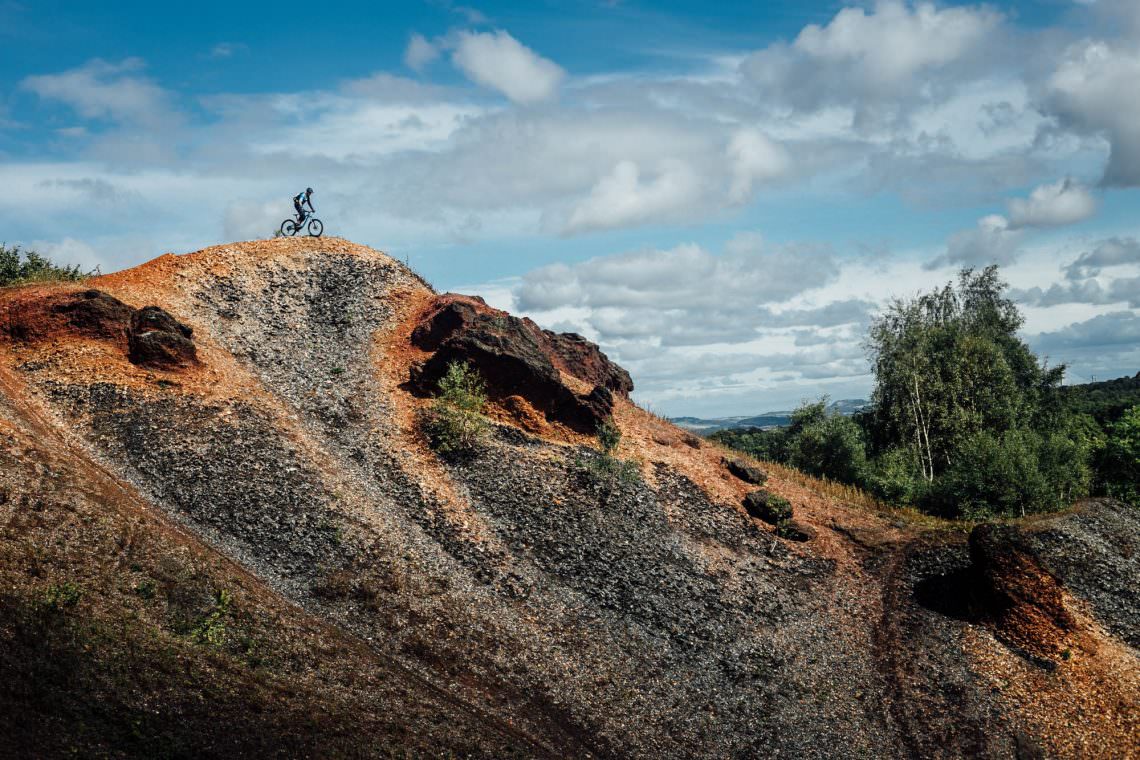
It is not countless injuries that have given Smith a new perspective on what it means to be a professional mountain bike rider, however, but fatherhood. The comeback kid is now a rad dad.
Comeback kid
1999. A downhill race in Nantmawr, north Wales. A wicked, off-camber descent through woodland. Conditions change from wet to dry with no apparent logic. Smith comes down hard.
“I got caught out by a wet patch and hit a tree,” he remembers. “The impact sliced my kidney in half and I started filling up with blood.”
It’s late on a Friday afternoon and Endura’s HQ, just 10 miles from the Bings, but seemingly another world, is rapidly emptying. Smith has packed away his bike, ready for the flight home to South West England, and over a late lunch shares some of the more dramatic moments of his career. We return to Nantmawr.
“They thought I’d broken my ribs and left me on my side, but I started pissing blood, which triggered alarm bells. I had a big, rushed operation where they split me down the middle to put blood back into me. I’ve got a scar from my sternum to below my belly button.”
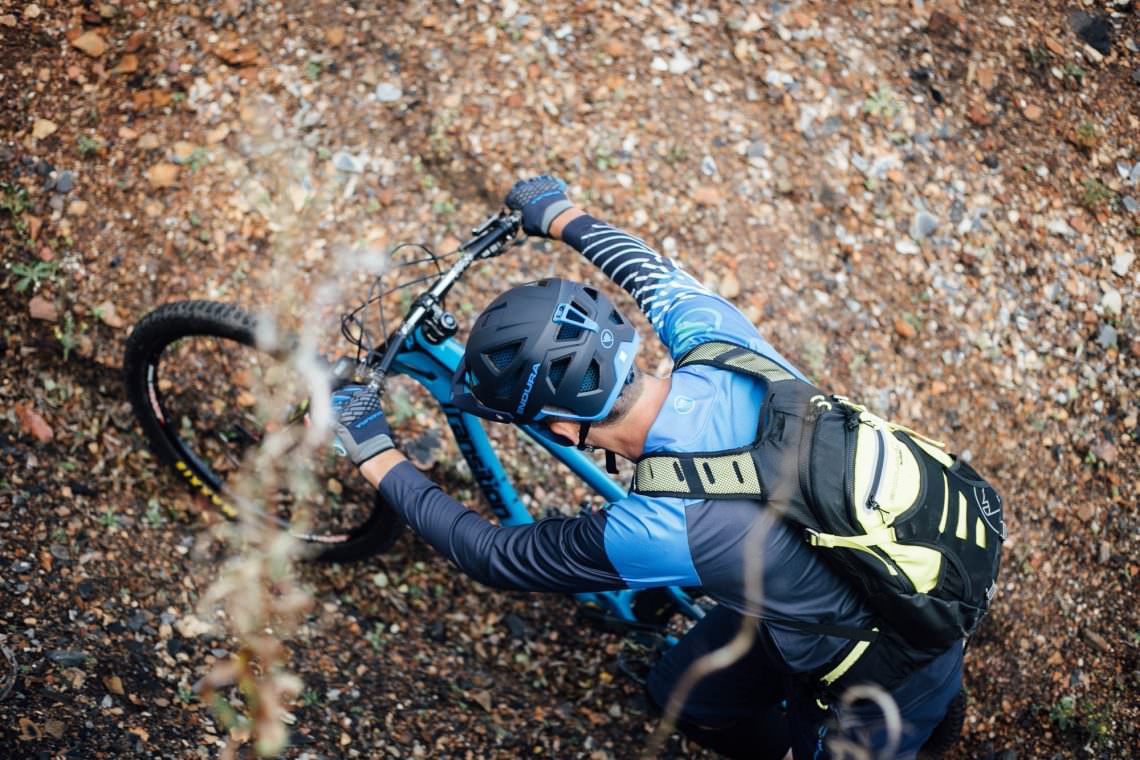
Smith does not do melodramatic. Instead, he smiles sheepishly and chuckles at the memory. He might as well have described tripping on a step, or catching his sleeve in a door. There are numerous other examples (including an altercation with a lamp post that nearly tore off an ear) that might have left lesser mortals seeking alternative employment, but Smith regards injury as part of the job. Broken bones are no more than an inconvenience, time off the bike, which, for the professional, means time not earning.
Near-death experience
There is one accident, however, which he is unable to shrug off, laugh about or simply chalk up to experience. It is the crash that haunts him.
It’s 14 years since Smith attempted a monstrous gap jump at Harnham, near Salisbury. “Fifty feet out and down,” in his own, succinct estimation. A younger man, and with responsibility to no one other than himself, Smith embraced the challenge in the manner of the nerveless individuals who ride at his level, merely as a chance to push boundaries.
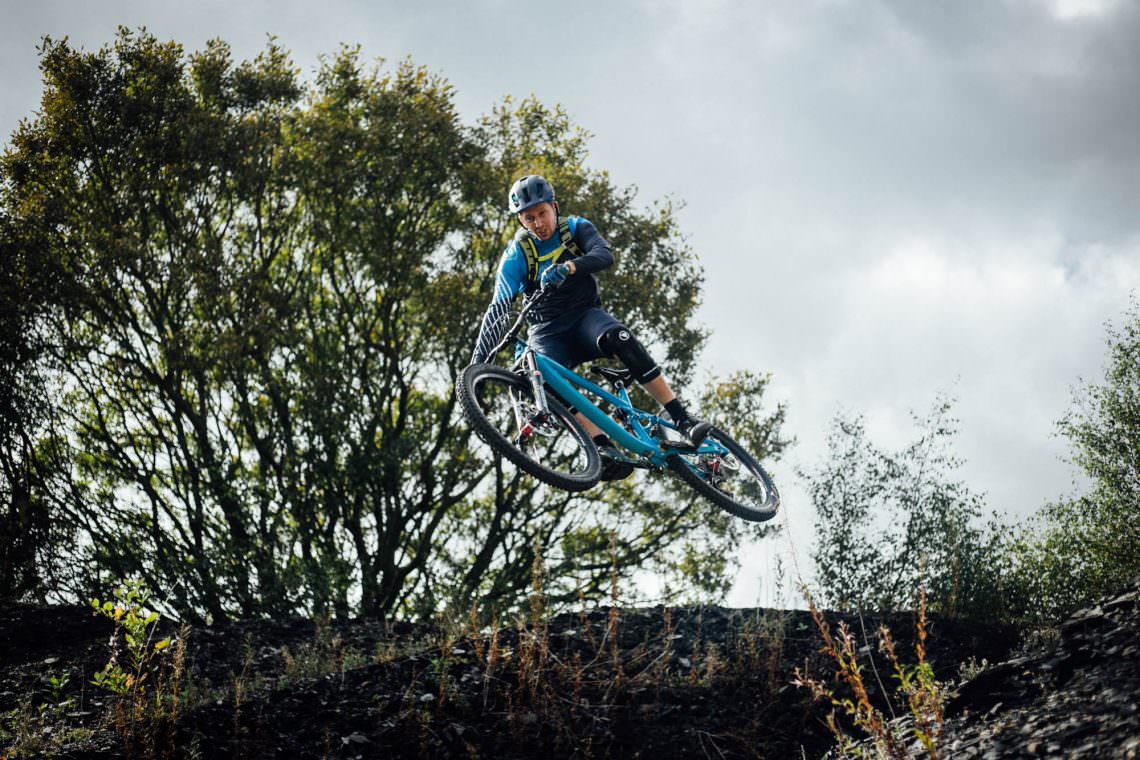
“Looking back, that was the closest I’ve been to dying,” he says, the sheepish grin now notably absent. “It’s hard to describe that feeling before death. I remember the wind whistling through my helmet. Usually it’s into your face, but this time, the wind came up through my ears.
“I didn’t have enough speed and fell into the gap, into the landing. There was a rock face coming at me and I was falling, hoping I was going to make it over [the rock face]. Luckily, I managed to land on the top and flip over. I think it would have killed me if I hadn’t.”
Smith did not escape unscathed. Far from it. He counts himself lucky to be alive. The impact of his unscheduled landing compressed his spine and fractured three vertebrae, as well as snapping an ankle that had to be pinned in four places. Physical injuries, however, were not the worst of it. The mental scars have still not healed.
“It wasn’t the worst crash, but it was the worst experience,” Smith concludes. “To stare death in the face is the scariest feeling.” He ain’t kidding.
“Could I overcome that jump?” he continues. “It’s a question of risk versus reward. There might be a mechanical failure – my handlebars could snap. If I crash again, and end up in a wheelchair, what would be the point? It wouldn’t further may career, but it could end it. It would get me a few weeks on Facebook, but I don’t want my kids to have to live with their dad in a wheelchair.”
“I could do it, but mentally…” He tails off, perhaps reliving the accident. “I don’t know.”

Rad dad
Professional mountain bikers, freeriders, call them what you will, are not typically presented by the media as complete personalities, with lives outside of the sport. The void is filled by the more easily peddled image of the 24/7 thrill seeker.
The stereotype is not without foundation, and in a young sport like mountain biking, where riders like Smith – one of the earliest regular cover stars for Mountain Biking UK – are only now hitting early middle age, is easy to understand. What might be described as the second wave, those inspired by the sport’s pioneers, are only now hitting their thirties and early forties.
Like any superficial image, however, the adrenalin junkie angle fails to tell the whole story. Smith is now a father of two (to Riley, aged five, and 11-month-old Cody) and has responsibilities to his family, as well as to his social media followers.
How difficult is it to deal with the risks inherent to the biggest moves, those that thrill the audience and please the camera? When does he switch off outside influences and focus entirely on the bike?

“As soon as I’ve got a helmet on,” Smith says. “It’s not like I don’t think about my family, but I’m at work and this is what I do. I have to focus on the job at hand. You can’t think about who’s at home waiting for you. You have big, scary moves ahead of you, and you want to come back through the door at the end of the day, but you can’t think like that.”
Parenthood has not made Smith suddenly risk averse, as passengers in his car will attest. While those who share a ride in the Smithmobile are often “shaking to bits” by the end of the journey, the driver is immune. Overtaking manoeuvres “don’t necessarily raise the heart rate,” he shrugs. It’s a good example of how Smith’s profession affects his everyday life.
The apprentice
“It’s more about overcoming the situation that’s scaring you,” he continues. “Overcoming the fear and beating it.”
A lifetime of practice must help too. Smith readily admits that he was not the most talented member of his earliest riding groups, but was the one prepared to put in the hours, where others faded away. As a child, his love for the bike bordered on obsession.
“I’d go to school, ride back home, have a drink and a sandwich, and stay out as late as a school kid could. Every spare minute I’d be on my bike. I’d be pressuring dad to let me take my bike on holiday. I became part of my bikes.
“Some friends had more natural talent, but with the amount of time I was prepared to put in, I surpassed those guys. There’s a ladder: you can work at tricks and work your way up. Constantly learning new things keeps it interesting.”
When Smith left school, he began an apprenticeship as a silversmith, but had little interest in much other than riding. His redundancy coincided with dirt jump pioneer Steve Geall moving to town. Smith began a new apprenticeship.
He remembers the early 2000s as exciting times for mountain biking, a still young sport splitting into various sub-sects as riders honed their skills in different niches.
“You had dirt jump guys doing insane BMX-style tricks on dirt bikes. Then there were hardcore downhill race guys, essentially riding motorbikes without engines. Freeride was a mix of dirt jump and downhill and normal cross-country. My niche was being able to do pretty much every style of riding. I wasn’t excellent at any one thing, but I was good at pretty much of all of it. That was always my strongest point.”
Hidden Playgrounds
The Bings is only one of a host of compelling locations that Smith has researched for Hidden Playgrounds, a series that will be published on Endura’s social media channels and shared with the wider media. An abandoned fairground is also on his list, and while Endura’s Martin Steele observes dryly that these are harder to come by, Smith is not easily deterred.
“It’s about being creative with what you find, rather than having things set out in front of you,” Smith says of his Endura-backed project, which he intends will run to five or six exclusive videos. “It’s nice to put the work in, say, linking together a wall and a drop off, and turning someone else’s wasteland into a hidden playground, rather than riding the same old manmade trails. ”
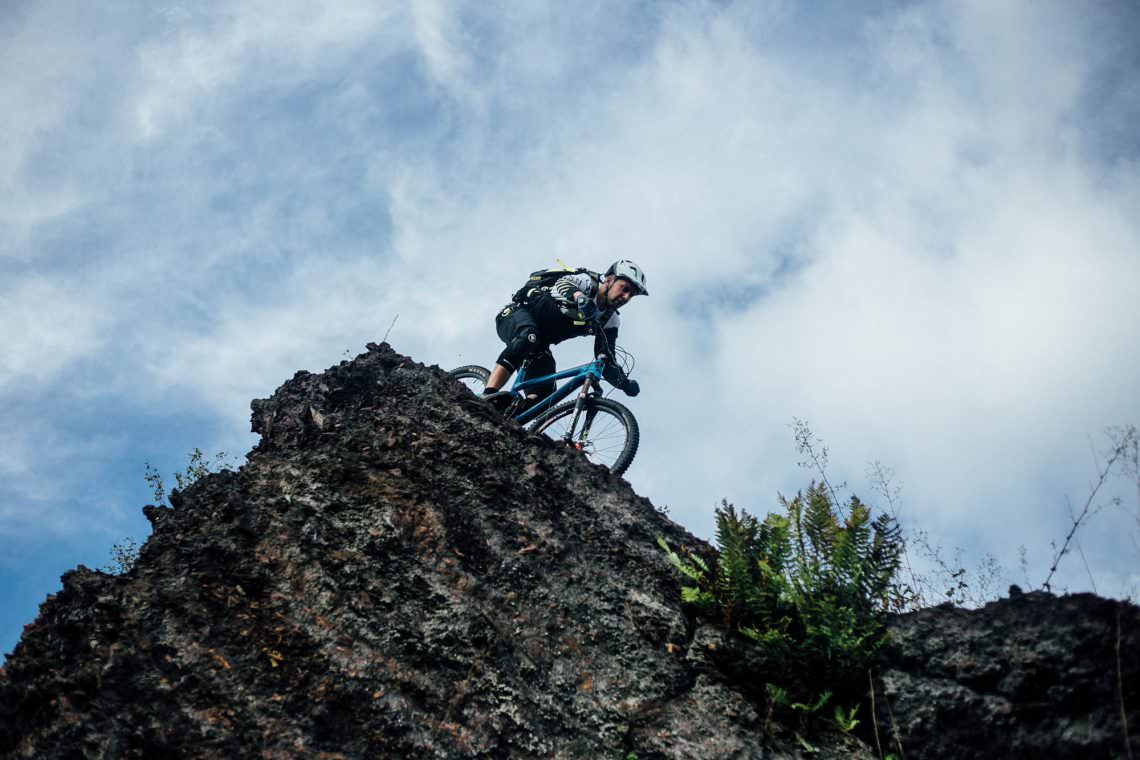
His task often begins at G: Google Maps, Google Earth, and Google Images. The Urban Exploration website is another of his favourite tools. But these are only the start.
“Then you delve deeper,” he continues, “following links to other stuff. You might stumble across a video; maybe someone’s posted something on a forum. You get a feel for the security of a location, the fear factor.”
He has also enjoyed the creative input of his supporters at Endura, for whom riding is merely an extension of the day job. From product director Pam Barclay to the staff on her marketing team, Hidden Playgrounds has something of the aspect of a personal project. While the team is apt to learn of Danny MacAskill’s next project when he drops by for a brew and casually mentions that he might need some new kit for a project set to begin in a week or so’s time (as was famously the case for Wee Day Out), with Smith they are more directly involved.
If recceing locations is a significantly safer part of the job than the riding, Smith’s expression changes as he describes the process and you can tell his mind has already leapt ahead to the bike. He admits to short-term memory loss, but isn’t certain if this is the result of numerous concussions or the hours of hard concentration demanded to perfect a move.
“I don’t know if it’s from injury, or just being so focused on the bike. You’re not exercising your brain, you’re just turning cogs.”
This is surely preferable to physical injury. We return to where we started, with Smith listing the inevitable results of such a dangerous calling: “Broken back, scapula, arm, elbow,” he says, as if reading aloud from a shopping list. “Both ankles have plates with screws at both sides…”
He brightens.
“It’s amazing what you recover from, and that gives you confidence. A broken arm takes eight weeks to heal. It’s not life changing, more of an inconvenience.”

For all the physical demands, Smith admits that his job is a dream compared to the nine-to-five grind that most people experience. He has ridden in some of the world’s more glamourous locations, from Sydney Harbour Bridge, in front of the opera house, to the Moab desert. Soon after our conversation, he packs his bags for Mexico.
Smith admits that he leads a privileged existence, even if it isn’t the unqualified blessing that those on the outside might consider it be. Turning a hobby into a job is most people’s dream, but when you ride to put bread on the table rather than for pleasure alone, some of the magic is inevitably lost. And then there is the danger.
Smith considers his position. The travel, he says, is unbeatable. He leaves unspoken the inherent risk.
“It’s not a bad thing, but sometimes it’s not necessarily a good thing,” he concludes. “But it definitely beats a nine-to-five job.”
Did you enjoy this article? If so, we would be stoked if you decide to support us with a monthly contribution. By becoming a supporter of ENDURO, you will help secure a sustainable future for high-quality mountain bike journalism. Click here to learn more.
Words: Timothy John Photos: Sean Hardy / Endura







